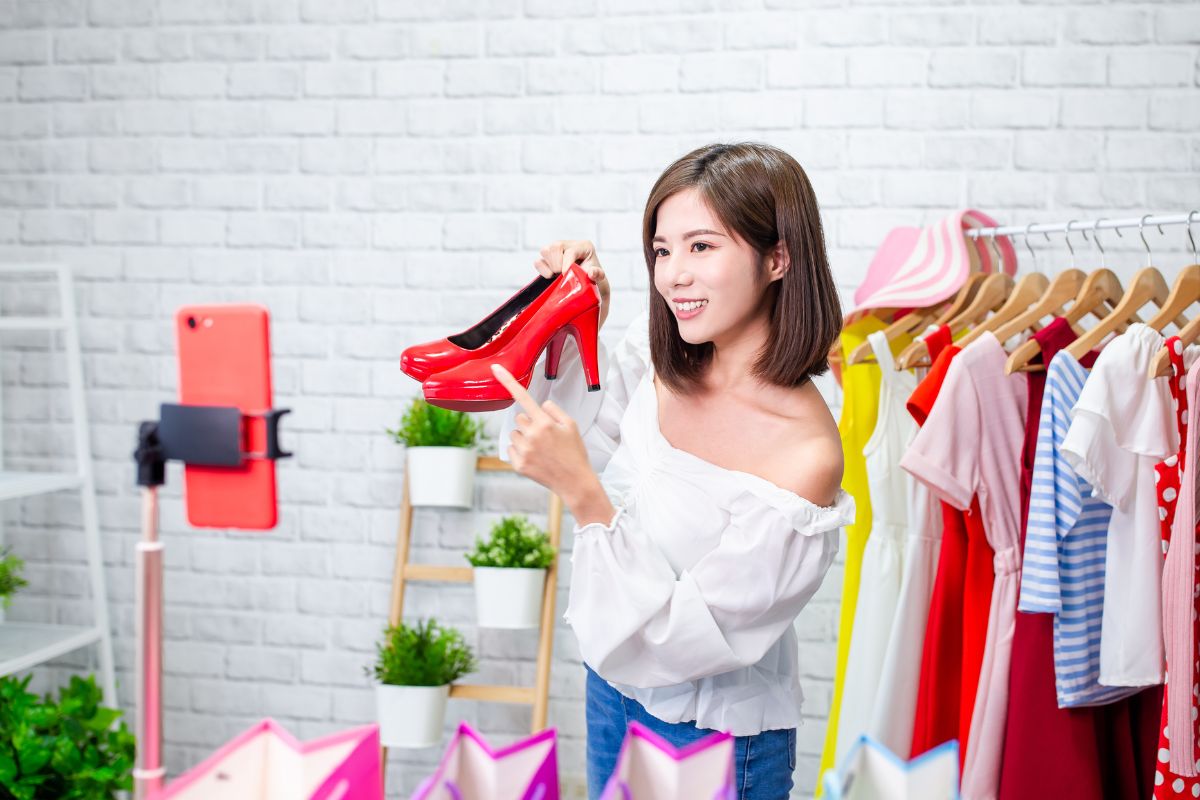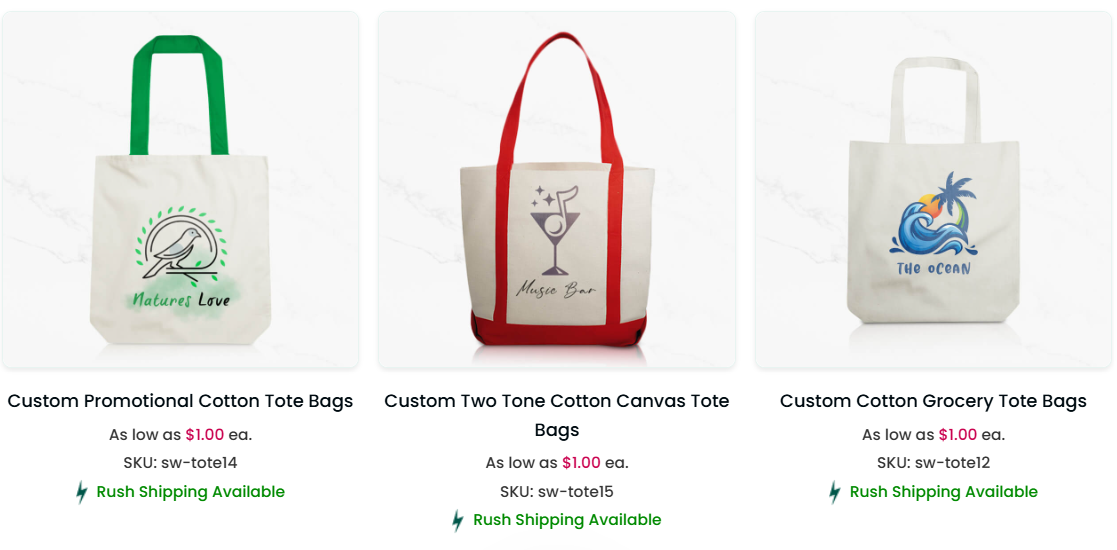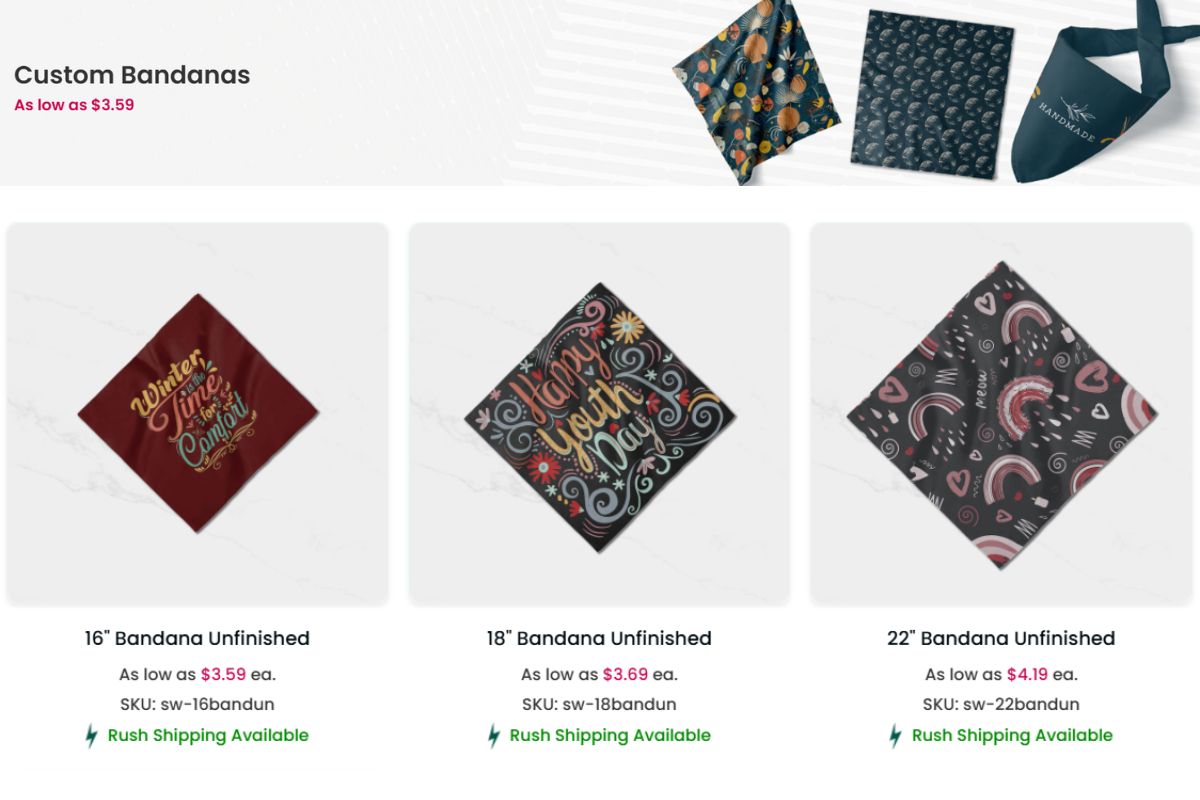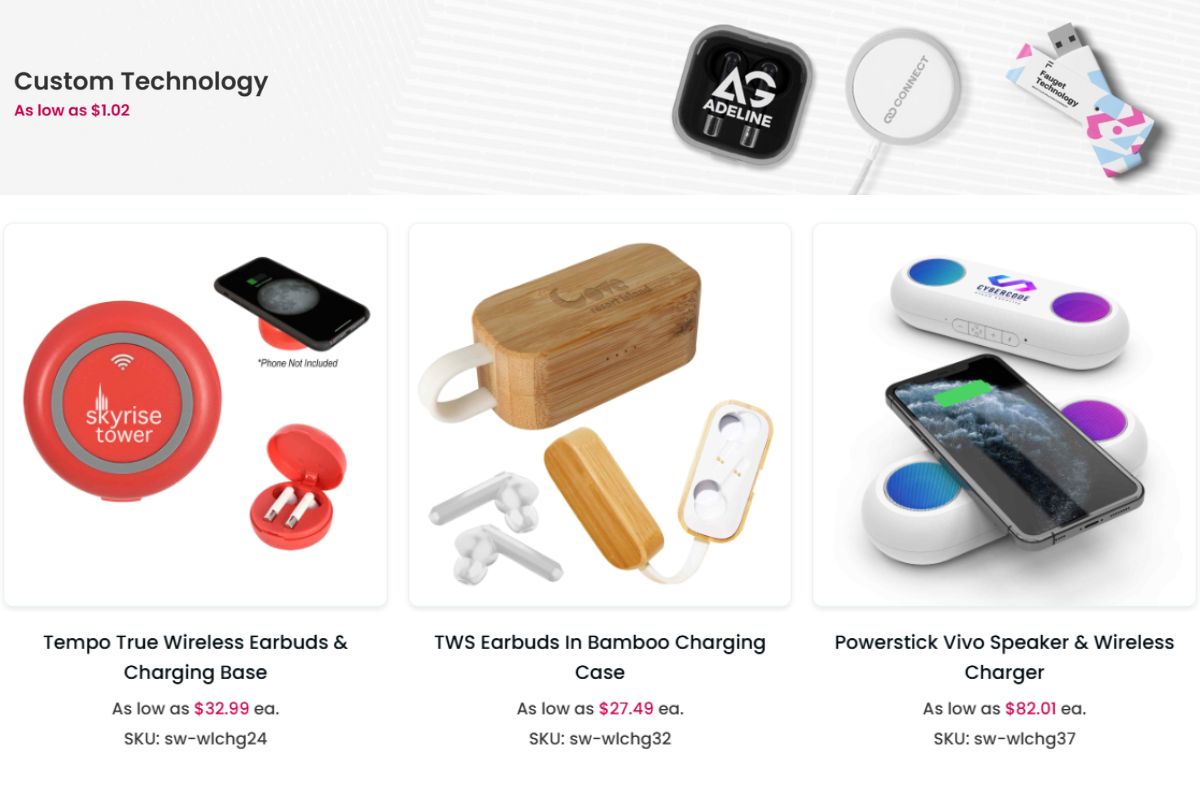If you’re looking to boost your brand and connect with fans, coming up with unique merch ideas is key.
Creative merchandise can not only enhance your visibility, but also increase your earnings and build a strong connection with your audience.
From apparel like t-shirts and hoodies to personalized items and tech gadgets, the options are endless.
Table of contents
- The Basics of Merchandising
- Merch Ideas and Design Inspirations
- Marketing and Selling Your Merch
- Custom Merchandise Production
- Promotional Strategies for Merch
- Product Diversification and Niche Merch Items
- Building Your Merch Brand
- Supplemental Merch Ideas
- Additional Considerations for Merch Entrepreneurs
- Frequently Asked Questions
- What are effective merchandising strategies for small businesses?
- How can artists leverage their work for unique merchandising opportunities?
- What are some innovative merch ideas that stand out from conventional options?
- What types of merch are popular for academic institutions to offer to their students?
- What merchandise do successful companies include in their branding strategy?
- How do YouTubers identify what kind of merch will appeal to their audience?
Explore ideas that cater to your specific audience.
You can create everything from eco-friendly products to digital downloads. Whether you’re a musician, influencer, or entrepreneur, there’s a merch idea that fits your brand and resonates with your followers.
The right merchandise can serve as a powerful tool for marketing and brand recognition.
As you think about what to create, consider products that reflect your identity and values while appealing to your audience’s interests.
The Basics of Merchandising
Merchandising is essential for anyone looking to sell products, especially if you want to grow your personal brand.
Understanding the types of merchandise and knowing your target audience are crucial steps to success.
Understanding Merch Types
There are various types of merchandise that you can consider for your brand. Here are some popular options:
- Clothing: T-shirts, hoodies, and hats represent your brand and connect with your audience.
- Accessories: Items like phone cases, bags, and stickers can enhance your brand’s presence in everyday life.
- Art Prints: Original artwork can create a deeper connection, especially for artists.
Each type serves a purpose. Clothing makes bold statements, while accessories are often more personal and practical.
Think about what aligns with your brand and what will resonate with your followers. Choose what fits your message best.
Identifying Your Target Audience
Knowing your target audience is key to effective merchandising. Start by asking yourself:
- Who follows my brand?
- What are their interests?
Consider creating buyer personas. These are fictional profiles that represent different segments of your audience based on demographics, interests, and behaviors.
This information can guide your merchandise choices.
You can also use social media insights to gather data. Look for trends in engagement and feedback. This will help you select products that appeal to your audience’s taste.
By aligning your merch with their preferences, you can build a loyal customer base.
Merch Ideas and Design Inspirations
| Merchandise | Best Customization Techniques | Ideal for |
|---|---|---|
| T-Shirts & Hoodies | Screen printing, embroidery, DTG (Direct-to-Garment) | Apparel brands, influencers, events |
| Hats & Caps | Embroidery, heat transfer vinyl, patches | Streetwear brands, sports teams |
| Tote Bags | Screen printing, sublimation, embroidery | Eco-friendly brands, giveaways |
| Stickers & Decals | Die-cut, holographic, vinyl printing | Artists, bands, online stores |
| Mugs & Drinkware | Sublimation, laser engraving, ceramic printing | Coffee brands, corporate gifts |
| Phone Cases | UV printing, sublimation, 3D printing | Tech brands, influencers |
| Posters & Wall Art | Digital printing, canvas prints | Artists, photographers, creators |
| Notebooks & Journals | Embossing, foil stamping, custom covers | Writers, students, corporate gifts |
| Keychains | Acrylic, metal engraving, 3D printing | Events, personal brands |
| Socks & Footwear | Knitted designs, sublimation, embroidery | Fashion brands, sports merchandise |
| Bags & Backpacks | Embroidery, screen printing, patches | Travel brands, corporate promotions |
| Lanyards & ID Holders | Screen printing, sublimation, woven designs | Conferences, corporate branding |
| Pins & Badges | Enamel, metal stamping, laser engraving | Fan merchandise, collectibles |
| Facemasks | Sublimation, heat transfer, embroidery | Health brands, promotional events |
| USB Drives | Custom casing, engraving, printed logos | Tech brands, corporate gifts |
When creating merchandise, having fresh ideas and inspiring designs can set your brand apart.
Explore innovative clothing designs, essential accessories, and unique home goods to attract your audience.
Innovative Clothing Designs
T-shirts and hoodies are classics in merchandise but can be revitalized with unique designs. Focus on various styles like graphic prints, tie-dye, or embroidered patches. These elements can make everyday wear stand out.
Consider using seasonal themes for custom designs. For example, you can create holiday-specific graphics for winter or summer styles.
Don’t forget about caps and beanies as stylish options for your merch line.
Simple designs can appeal to a broad audience, while bold, creative concepts may attract niche markets.
Accessory Essentials
Accessories like tote bags, socks, and caps provide great opportunities for creativity.
You might opt for eye-catching prints or text on tote bags to catch attention. Sustainable fabrics can also appeal to eco-conscious consumers.
Socks are another unique avenue; consider fun patterns or inspirational messages. Custom embroidery can add a personal touch that customers appreciate.
Caps are versatile and can feature simple logos or intricate designs. You can experiment with different styles and materials to cater to various preferences.
Home Goods and Lifestyle Products
Expanding into home goods can broaden your merchandise appeal.
Items like mugs and water bottles are practical and offer space for memorable graphics or catchy phrases.
You can customize mugs with illustrations or quotes that resonate with your buyers.
Another idea is creating journal notebooks with unique covers, enhancing the writing experience for your audience.
These products not only enhance daily life but also keep your brand in consumers’ minds.
By blending creativity and functionality, you can create desirable items that fit into everyday routines.
Marketing and Selling Your Merch
| Category | Effective Strategies |
|---|---|
| E-commerce Platforms | Sell on Shopify, Etsy, Amazon, or your own website using print-on-demand services like Printful or Teespring. |
| Social Media Marketing | Promote merch on Instagram, TikTok, Facebook, and Pinterest with engaging visuals, reels, and influencer collaborations. |
| Influencer & Affiliate Marketing | Partner with influencers or affiliate marketers to reach a wider audience and drive sales. |
| Email Marketing | Build an email list and send promotions, new arrivals, and exclusive discounts to subscribers. |
| SEO & Content Marketing | Optimize product descriptions with keywords and create blogs or YouTube videos around your merch. |
| Paid Ads | Run Facebook Ads, Google Ads, and TikTok Ads targeting your ideal audience. |
| Brand Collaborations | Collaborate with other brands or influencers for limited-edition merch drops. |
| Giveaways & Contests | Host social media giveaways to increase engagement and attract potential buyers. |
| Pop-up Shops & Events | Sell merch at local events, festivals, or pop-up shops for offline engagement. |
| Loyalty & Referral Programs | Offer discounts or rewards for repeat customers and referrals. |
| Bundling & Limited Editions | Create exclusive merch bundles or limited-time releases to increase urgency and sales. |
| Customer Reviews & UGC (User-Generated Content) | Encourage customers to share photos/videos of their merch and feature them on your socials. |
| Subscription Boxes | Offer a monthly merch subscription box for recurring revenue. |
| Wholesale & Bulk Orders | Sell in bulk to corporate clients, schools, or event organizers. |
To successfully market and sell your merch, you need to create an engaging online presence and follow best practices.
The aim is to attract customers and convert visits into sales through effective strategies.
Creating a Compelling Merch Store
Start by choosing an excellent platform like Shopify or Etsy. These platforms make it easy to set up an online merch store.
Make sure your store is visually appealing. Use high-quality images of your products, clear descriptions, and a user-friendly layout. Highlight your best-selling merchandise to catch attention quickly.
Consider adding features like customer reviews and ratings. Positive feedback builds trust and encourages others to buy.
Also, include a blog or a section for updates about new releases. Regular content keeps customers engaged and informed.
Don’t forget to optimize your store for mobile users. Many shoppers browse on their phones, so ensure your site is responsive and easy to navigate.
Best Practices for Selling Merchandise
Promoting your merchandise online is key to success.
Use social media to showcase your products and connect with potential buyers. Platforms like Instagram and TikTok can be powerful tools for reaching a larger audience.
Engage with your audience through contests, giveaways, and polls. These activities increase visibility and encourage interaction with your brand.
Consider using email marketing, too. Build a subscriber list and send newsletters with promotions or new product launches. This keeps your brand on top of customers’ minds.
Lastly, analyze your sales data to understand which products are most profitable.
Adjust your marketing strategies based on what works best. Focus on promoting those items to boost your sales further.
Custom Merchandise Production
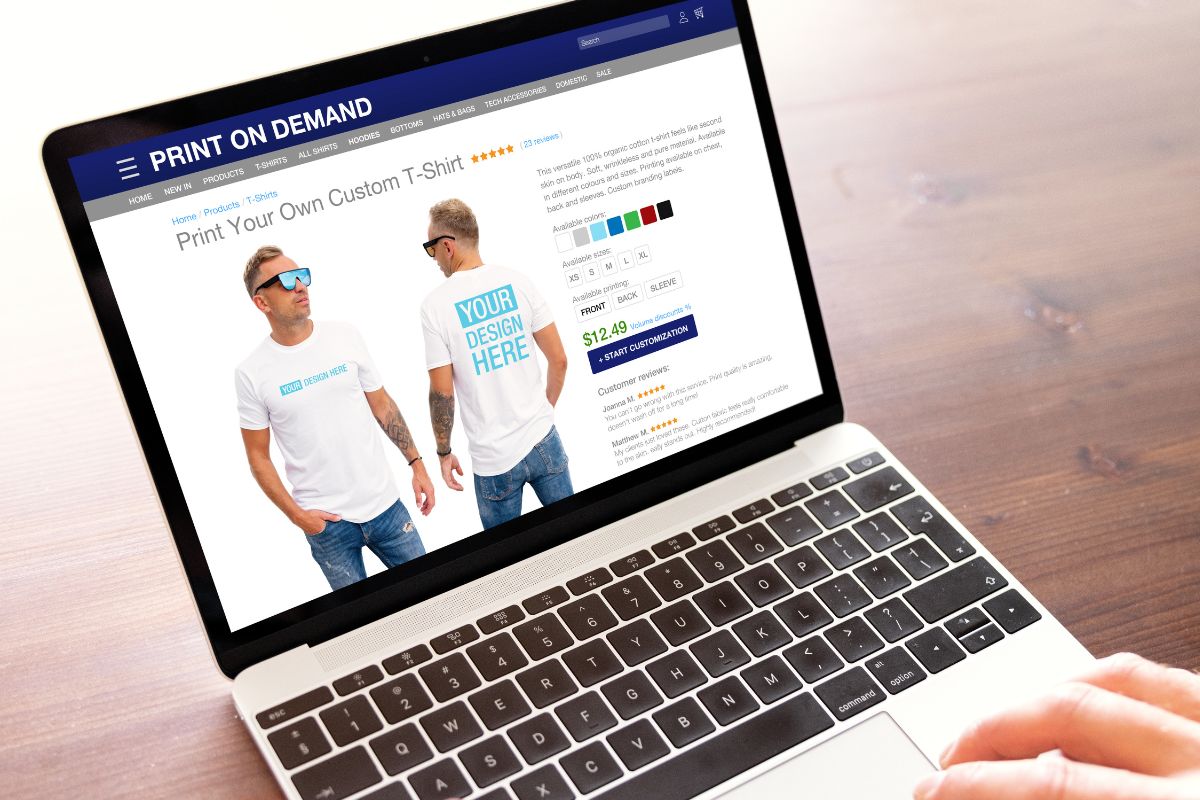
Creating custom merchandise involves careful planning and choosing the right production method. You can choose between print-on-demand services or local production, each with unique benefits and challenges.
Print-On-Demand Services
Print-on-demand (POD) services are a popular choice for custom merchandise like t-shirts, mugs, and stickers. With POD, you can create products without investing in inventory. This means low upfront costs and less risk for you.
Companies like Printify allow you to easily upload your designs and select products.
Benefits include:
- Wide Range of Products: Choose from t-shirts, mugs, stickers, and more.
- Easy Customization: Adjust designs as needed without hassle.
- Scalability: Grow your product line without large investments.
However, consider the shipping times and quality control, as these can vary. Always order a sample to check quality before selling.
Local vs. Global Production Considerations
When deciding between local and global production, consider your target audience and branding.
Local production can be beneficial for quicker turnaround times and lower shipping costs. It also allows for better communication and support.
On the other hand, global production often offers a wider selection and may reduce manufacturing costs.
Keep the following in mind:
- Local Production: Faster delivery, supports local economies, easier to manage quality.
- Global Production: Potentially lower costs, more variety, but longer shipping times and customs complications.
Consider your goals and product type when making this choice. Your decisions here will impact your brand’s image and customer satisfaction.
Promotional Strategies for Merch
| Strategy | Description | Best For |
|---|---|---|
| Social Media Campaigns | Use Instagram, TikTok, and Facebook to showcase merch with engaging posts, reels, and live streams. | Influencers, apparel brands, artists |
| Giveaways & Contests | Offer free merch in exchange for likes, shares, and tagging friends to boost engagement. | New product launches, brand awareness |
| Limited-Time Discounts | Create urgency with flash sales, seasonal discounts, and exclusive promo codes. | Holiday sales, special events |
| Influencer Collaborations | Partner with influencers to showcase merch to their followers. | Fashion, lifestyle, and niche markets |
| Affiliate & Referral Programs | Reward customers and affiliates for referring others to your store. | E-commerce brands, online businesses |
| User-Generated Content (UGC) | Encourage customers to post photos of your merch and feature them on your socials. | Community engagement, brand loyalty |
| Email Marketing | Send personalized product recommendations, discounts, and updates to subscribers. | Established brands, customer retention |
| SEO & Content Marketing | Write blogs, create YouTube videos, and optimize product pages to rank higher in searches. | Organic traffic, long-term marketing |
| Paid Advertising | Run Facebook, Google, and TikTok ads targeting your ideal audience. | Quick sales, brand visibility |
| Bundling & Upselling | Offer discounts on bundles or suggest related items to increase cart value. | Increasing average order value |
| Event Sponsorships & Pop-Ups | Sell merch at events, concerts, or local pop-ups for in-person exposure. | Niche markets, local branding |
| Collabs & Co-Branding | Team up with another brand or artist to create exclusive merchandise. | Expanding audience reach |
| Loyalty & VIP Programs | Reward repeat customers with discounts, early access, or exclusive drops. | Customer retention, premium sales |
| Subscription Boxes | Offer a monthly merch box with exclusive or themed items. | Recurring revenue, niche audiences |
Effective promotional strategies for your merch can create a deeper connection with your audience.
By focusing on partnerships and engagement, you can enhance visibility and drive sales.
Leveraging Influencer and Musician Partnerships
Partnering with influencers and musicians can expand your reach significantly.
Choose individuals whose values and style match your brand. Their established fan base can discover your merch through their endorsement.
Collaborative Ideas:
- Create exclusive merch lines featuring influencer designs.
- Offer special bundles that combine their products with your merch.
This approach builds authenticity, as fans trust these figures.
When planning, ensure the partnership feels organic. You want fans to see your brand as a natural fit, not just a marketing ploy.
The right partnership influences their buying decisions and fosters brand loyalty.
Authentic Engagement with Fans
Connecting with your audience on a personal level is crucial.
This means showcasing your values and making fans feel included.
Consider interactive events or social media campaigns to engage them directly.
Strategies for Engagement:
- Host virtual Q&A sessions with musicians or influencers.
- Encourage fan-generated content related to your merch.
Creating a sense of community will enhance loyalty.
Use their feedback to improve your offerings and make fans feel heard.
Remember to showcase authenticity in your messaging.
This approach not only drives sales but cultivates ongoing relationships with your audience.
Product Diversification and Niche Merch Items
Diversifying your product offerings can help you reach different audiences and enhance your brand. Niche merch items often appeal to specific interests, allowing you to connect more deeply with your fans. Here are two ways to explore this area effectively.
Themed and Limited Edition Collections
Creating themed and limited edition merchandise can drive excitement and urgency among your audience. This approach works well for special events, album releases, or holidays.
For example, you can design unique stickers and posters that reflect a specific theme related to your brand or current projects.
Using handsigned lyrics or exclusive artwork can add a personal touch that fans appreciate.
Limited runs of items like backpacks, fanny packs, or bandanas can create a sense of rarity, appealing to collectors.
Consider promoting novelty socks or guitar picks designed for specific songs or events to keep your merchandise fresh and engaging.
Exploring Niche Merch Product Ideas
Niche merch can set you apart in a crowded market.
Think about items that resonate with your unique audience.
For example, if you target gamers or music lovers, craft products such as wall art that showcases iconic scenes or lyrics from popular games and songs.
Additionally, consider using canvas for high-quality prints that appeal to art enthusiasts.
Keychains and patches are great for attaching personal flair to everyday items, while simple stickers can spread your brand logo widely.
Offering tailored items that reflect your audience’s passions helps create a strong community around your brand.
Choose merch design ideas that relate to specific themes your followers value to boost connection and sales.
Building Your Merch Brand
| Step | Key Focus | Actionable Tips |
|---|---|---|
| 1. Identify Your Niche | Choose a unique theme or audience | Research trending designs, find underserved markets, and align with personal interests |
| 2. Create a Brand Identity | Logo, colors, typography, and tone | Develop a recognizable style with a consistent theme across all platforms |
| 3. Design High-Quality Products | T-shirts, hoodies, accessories, etc. | Use professional design tools (Canva, Photoshop) or hire a designer |
| 4. Select a Print-on-Demand Partner | Choose reliable suppliers | Compare Printful, Printify, and AOP+ for pricing, quality, and shipping time |
| 5. Build an Online Store | Choose a platform (Shopify, WooCommerce, Etsy) | Optimize for mobile, use high-quality product mockups, and ensure smooth checkout |
| 6. Optimize SEO & Content Marketing | Rank higher on Google | Use keyword-rich product descriptions, blog posts, and social media content |
| 7. Leverage Social Media & Influencers | Promote your brand | Run targeted ads, collaborate with micro-influencers, and use viral trends |
| 8. Offer Competitive Pricing & Discounts | Attract more buyers | Use introductory offers, bundle deals, and limited-time discounts |
| 9. Manage Customer Support & Feedback | Build trust and loyalty | Provide quick responses, encourage reviews, and improve based on feedback |
| 10. Scale & Expand | Grow your brand | Add new products, explore collaborations, and invest in automation |
Creating a strong brand for your merchandise involves effective storytelling and maintaining a consistent visual style. These elements help connect with your audience and differentiate your products in a crowded market.
Brand Storytelling Through Merch
Your brand story is essential in shaping how customers see your merch products. It goes beyond just selling items.
Think about the values and experiences you want to convey.
Identify Your Message: Clearly define what your brand stands for. Is it creativity, sustainability, or community?
Use Your Merch: Let your custom products tell your story.
For example, if you focus on sustainability, consider using eco-friendly materials. Share stories on tags or packaging to create a personal touch.- Engage Your Audience: Encourage customers to share their experiences with your merchandise on social media. This not only builds community but also spreads your brand message organically.
Creating a Cohesive Brand Aesthetic
A cohesive brand aesthetic makes your merch instantly recognizable. Pay attention to the visuals and style across all platforms.
Color Palette: Choose 2-3 primary colors that reflect your brand. Use these consistently in your designs, packaging, and marketing materials.
Typography: Select fonts that match your brand’s personality. Consistent typography helps reinforce your brand identity.
Design Elements: Incorporate logos and other visuals in a way that feels natural. Custom products should align with your overall aesthetic.
Quality Control: Ensure that each piece of merchandise meets quality standards. This enhances brand perception and customer satisfaction.
Supplemental Merch Ideas
Expanding your merchandise offerings can enhance your brand and engage your audience. Consider unique tech gadgets and creative DIY options. These ideas can appeal to a wide range of customers and provide additional revenue streams.
Tech Gadgets and Accessories
Tech gadgets are popular for many audiences. Items like phone cases, wireless chargers, and portable speakers tend to sell well. Customize these products with your logo or unique designs.
Examples include:
- Phone Cases: Offer durable options with unique artwork.
- Headphones: Branded wireless headphones attract tech lovers.
- Smartphone Stands: Handy for anyone working or gaming on their devices.
Incorporating accessories like USB drives and charging cables can also appeal to customers. These products are practical and can be used daily, keeping your brand top-of-mind.
Artistic and DIY Merch Options
Creating merchandise that allows for personal expression can attract a creative crowd. Options like enamel pins and art prints are perfect for showcasing artistic designs.
Consider these ideas:
- Enamel Pins: Small, unique designs can be worn on jackets or bags, making them collectible.
- Art Prints: Offer prints of your designs for customers to hang in their homes.
- Custom Sweatshirts and Hoodies: Great for colder months, these can feature eye-catching designs or slogans.
DIY kits for crafts offer fun, hands-on experiences. Think about including items that allow customers to create their own designs or personalize merchandise. This engagement can boost customer loyalty and increase sales.
Additional Considerations for Merch Entrepreneurs
| Consideration | Why It Matters | Actionable Tips |
|---|---|---|
| Legal & Trademark Protection | Avoid copyright issues and protect your brand | Register your brand, check for trademarks before using slogans/logos |
| Sustainable & Ethical Sourcing | Appeal to eco-conscious customers | Use organic fabrics, ethical suppliers, and highlight sustainability in marketing |
| Product Quality & Printing Methods | Ensure durability and customer satisfaction | Compare DTG, screen printing, embroidery, and heat transfer for best results |
| Shipping & Fulfillment Strategy | Reduce costs and delivery time | Choose print-on-demand partners with global reach and reliable tracking |
| Brand Story & Community Building | Create emotional connection with buyers | Share your journey, use storytelling, and engage with your audience on social media |
| Email Marketing & Retargeting | Increase repeat sales | Build an email list, send exclusive discounts, and retarget abandoned carts |
| Analyzing Data & Trends | Optimize for growth | Track sales, website traffic, and customer behavior using Google Analytics and Shopify reports |
| Diversification of Revenue Streams | Protect against market shifts | Sell on multiple platforms (Etsy, Amazon, your website) and consider licensing deals |
| Limited Edition & Scarcity Tactics | Create urgency for sales | Use pre-orders, exclusive drops, and countdown timers |
| Customer Loyalty & Referral Programs | Encourage word-of-mouth marketing | Offer rewards, discounts, or free products for referrals and repeat purchases |
When creating your merchandise, it’s important to consider logistics, fulfillment, and legal aspects. These factors play a key role in your success and will help ensure a smooth operation as you grow your brand.
Logistics and Fulfillment
Efficient logistics and fulfillment are crucial for your merch business.
Start by selecting reliable suppliers and manufacturers. Look for companies that can provide quality products like tote bags, beanies, and fanny packs, while meeting your design specifications.
You need to decide whether to handle fulfillment in-house or use third-party services.
In-house fulfillment gives you control, but requires more time and resources. Third-party fulfillment can save you time and help scale your operations, but comes with costs.
Consider your inventory management system. Keep track of trends, such as popular items like athleisure wear or custom jewelry, so you can restock effectively.
Efficient logistics will enhance customer satisfaction and encourage repeat purchases.
Legal Aspects of Selling Merch
Understanding the legal requirements is essential for your merch business.
Start by ensuring your products don’t infringe on any copyrights or trademarks. Conduct research on unique designs and check if any logos or features are protected before you use them.
Set up your business structure. Depending on your goals, you may choose to be a sole proprietor or form an LLC. This choice impacts your taxes and personal liability.
Don’t forget to consider sales tax regulations in your area. You may need to collect and remit taxes based on where you sell. Keeping thorough records will help you manage these requirements.
Frequently Asked Questions
Exploring merchandising can help you find the right strategies and ideas for your business or brand. Here are some common questions about effective merch ideas, especially for small businesses, artists, schools, and more.
What are effective merchandising strategies for small businesses?
To succeed in merchandising, focus on your target audience. Use social media to promote your products and engage with customers. Also, consider limited edition items or seasonal themes to spark interest.
How can artists leverage their work for unique merchandising opportunities?
Artists can turn their creations into merchandise by using prints, apparel, or accessories. You might sell art prints, stickers, or custom clothing. Collaborating with brands or platforms for exclusive items can also expand your reach.
What are some innovative merch ideas that stand out from conventional options?
Think outside the box with items like sustainable goods, creative packaging, or tech gadgets. Custom puzzles, enamel pins, or DIY kits are popular. Focus on adding a unique twist to everyday products to attract attention.
What types of merch are popular for academic institutions to offer to their students?
Schools often provide branded apparel, like t-shirts and hoodies, along with accessories like mugs and bags. You could also consider offering items like notebooks, stickers, or even custom art supplies to connect with students.
What merchandise do successful companies include in their branding strategy?
Successful companies often include a mix of apparel, accessories, and practical items. Think about branded water bottles, tote bags, and tech accessories. These products not only serve a purpose but also keep your brand visible.
How do YouTubers identify what kind of merch will appeal to their audience?
YouTubers often analyze viewer demographics and feedback.
Keep an eye on comments and social media to gauge interest.
Conducting polls can help you determine what types of merchandise your followers want, ensuring a better fit with their preferences.

